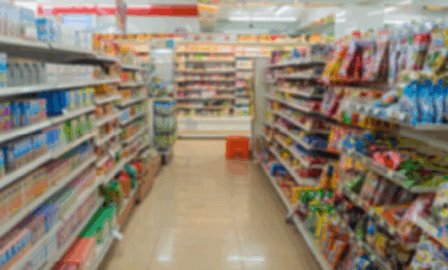How to Improve Demand Forecasting with External Data Sets
This blog post recaps a webinar featuring Clarkston Consulting’s Jason Kerns covering how to improve demand forecasting by leveraging external data sets. The webinar, hosted by KNIME, also features representatives from Theobald Software. Read on below or watch the webinar here.
Recent history has highlighted the limitations and challenges of utilizing traditional timeseries forecasting models. Because demand forecasts rely on historical sales data as a key input to developing a forward looking forecast, many companies across the consumer products, life sciences, and retail industries are challenged with the task of figuring out what to do with pandemic-influenced data from 2020 and beyond.
Unfortunately, there is no “one size fits all” approach to making sense of this disruptive period in the global economy. Demand spikes and subsequent stockouts were different for various products and for various parts of the world.
Combining External Data Sets with In-House Data
To understand these differences and how external factors might impact the demand for a product or service, an effective strategy will combine data which would traditionally be an input to the demand planning process with other external data sets in order to build a more robust model. How does inclement weather impact shipping lead times? Ordering patterns for shelf stable foods when everyone starts working from home and restaurants are closed?
While intuitively this type of analysis makes sense, a challenge for many companies historically has been actually harnessing data stored in SAP for this purpose – such as actual sales – and combining it with external data sets not stored in the ERP to arrive at actionable insights that can lead to more accurate forecasts.
During this webinar, our analysts extracted SAP historical demand data using Theobald connectors and merged it with publicly available datasets related to COVID-19 and the U.S. workforce to perform a few straightforward yet powerful modeling techniques on the KNIME analytics platform. The modeling approach would allow any business analyst/demand planner to answer questions around how non-traditional external influences, such as public policy directives like stay-at-home orders and business shutdowns, COVID-related public health statistics around hospitalizations, positive cases, and COVID deaths, affect demand for given product/location.
We would expect that this analysis may be most relevant when done for specific products/SKUs and location because external factors impact consumers, shoppers, and patients differently based on demographics like geography, and will really depend on the specific product. For example, demand for toilet paper likely behaved differently than canned food, even though both were key targets of concerned customers during the stocking up phase of the early pandemic. Shifting demand balance for commercial vs. consumer SKUs (different packaging configurations for meat, dairy, etc.) may shift demand at the finished good level, but for how long? Demand for medical devices used only for elective surgeries would look very different than any of these, even with the same world events happening around them.
Learn More About How to Improve Demand Forecasting in our KNIME Webinar
Examples of How to Improve Demand Forecasting with External Data Sets
We partnered with a long-term consumer products client to extract SAP data for a common household consumable good – aluminum foil – which we used as a baseline to build a demonstration around such modeling capabilities on the KNIME Analytics Platform.
The first step is to explore the data to understand what we’re looking at, identify which statistical models will best describe the data, and what features within the dataset may be the most important to focus on. A key objective was to try to understand where and why shortages occur. To do this, we applied different exploratory techniques: future importance on a trend model, conditional box plot across features, and line plot comparison across features. This analysis fed into the development of a baseline model which can be used to predict values of future order quantities.
We then built a classification model to predict if future data points behave like they were before or during COVID so you can decide objectively for this product: when did COVID “start” and when did it “stop” – as in, return to patterns of demand and seasonality that are more consistent with historical trends (if it ever does)
This forecasting is just an example of the types of analysis you can perform with SAP data using KNIME; there are infinite number of other use cases such as inventory optimization, pricing simulations, sales reporting, etc.
This is where Theobald connectors add value. Historically, a barrier to making this type of analysis more than just an offline exercise has been the ability to easily extract data from SAP for any kind of external manipulation, and more pointedly, the ability to load enriched data back into SAP to make it actionable for the downstream business operations. The Theobald connector nodes in the KNIME analytics platform facilitate the simple and efficient transfer of SAP data to enable value-added activities such as building better forecasting models than are available with the standard SAP toolset.



